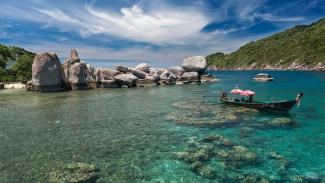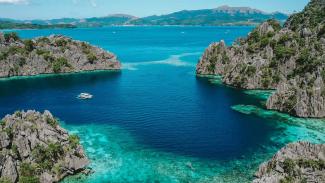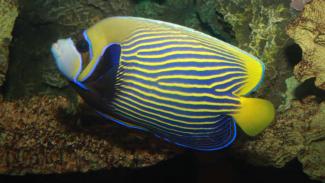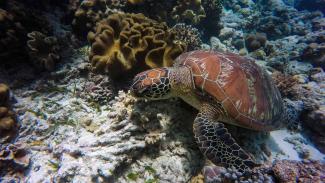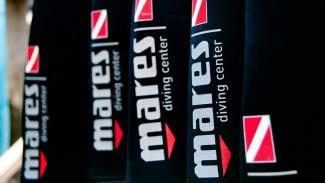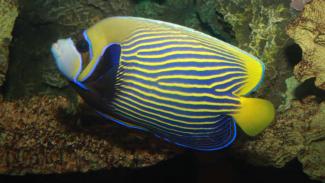Everything you need to know about dving the Perhentian Islands
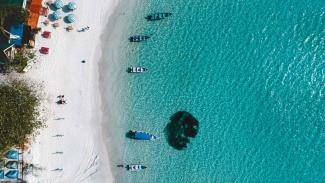
Izuddin Helmi Adnan
Off the north-eastern coast of Peninsular Malaysia, not too far south of the Thai border, the beautiful Perhentian Islands rise vertically out of the sparkling blue sea, creating one of Malaysia's most iconic diving destinations & one of the most popular spots in Malaysia to learn to dive.
The Perhentians comprise of two main islands, Perhentian Besar & Perhentian Kecil. Both are picture perfect tropical islands, with good diving, great beaches and unspoilt jungle.
Highlights
Best diving spots
Both Perhentian Islands - Besar & Kecil, meaning large & small - have nice fringing reefs, interesting rock formations & some enjoyable wreck dives.
Tokong Laut is a nice dive. this pinnacle reaches up to the surface, providing shelter to many interesting smaller fish, plus schools of Jack, Snapper & Fusiliers in the blue. Barracuda & Tuna are sometimes seen and, in season, Whale Sharks are a small possibility.
Termuba Tiga, or Three Brothers is another excellent site. Large boulders create a fascinating underwater landscape, with plenty of canyons & swim-throughs and nice corals. Schools of Mackeral & Barracuda cruise the blue and it’s possible to find Whitetip Reef Sharks or Leopard Sharks sleeping under the rocks.
Tanjung Besi at the northern tip of Perhentian Besar has large boulders that create some interesting caves & swim-throughs. Often, the caves hide large Groupers, while Barracuda hover menacingly in the blue.
Vietnamese Wreck is another good dive, although sometimes with limited visibility. The wreck has developed into a vibrant artificial reef with plentiful marine life and the chance to see some more unusual critters, such as Stonefish & Devil Scorpionfish.
The best wreck in the area is called the Sugar Wreck. This large wreck sank in 1997 and is still in excellent condition. While corals have not really had a chance to take hold, the wreck has proved to be a magnet for marine life, with a good chance to see some of the area's larger marine species.
The Perhentians are a popular place to learn to dive - many of the sites are just a few minutes boat ride away and provide great conditions for training.
When to dive
The season runs from April - September. Outside these months, the islands pretty much close down for low season
Getting there
The islands can be reached by ferry or speedboat from the mainland and trips are made regularly each day in high season. For much of low season - from November to February - there is a limited service to the islands.
Activities
Aside from diving, there is not a great deal to do not the island. Relaxing, sun-bathing, snorkelling & kayaking are the main pass-times. It is also possible to go trekking in the jungle. Despite the island's popularity, it is a fairly quiet place with limited night-life.
Resort and liveaboard options
Most of the cheap accommodation is on Perhentian Kecil, which tends to attract independent & budget travellers. Perhentian Besar has more upmarket accommodation. There is plenty of choice, especially for budget travellers. The island is in a marine park and there is a small fee to visit. There is also a dive resort on the small island of Lang Tengah to the south which makes for an excellent base.
You might also enjoy...
Koh Tao
Koh Tao (sometimes spelt Ko Tao) is Thailand's original island diving destination and now the most popular place in the country to learn to dive.
The diving on Koh Tao is known for its colourful reefs that are ideal for beginners, plus some deeper pinnacles with the chance of big fish encounters for more advanced divers.
There is a wide choice of dive centres to enjoy and plenty of accommodation options to choose from.
Coron Bay & El Nido
Coron Bay's diving is all about shipwrecks. Here, a fleet of Japanese warships were sunk in WWII, creating one of the Philippine's most popular and unique diving destinations.
There is more good diving around El Nido, which has great beaches and lovely coral reefs.
Pattaya
Pattaya offers a somewhat different diving experience to other destinations in Thailand. Located close to Bangkok, it is significantly more built-up than any other destination, with a bustling night-life & plenty of topside activities.
While not offering the quality of diving of some of Thailand's more remote locations, it is an extremely convenient dive spot with plenty of established dive shops & facilities for divers.
Con Dao
Con Dao is a small group of 14 islands situated south from Ho Chi Minh City in the South China Sea.
While the south of Vietnam is part of the Mekong Delta and subject to a lot of run-off, the Con Dao islands are far enough away to be blessed with very good visibility and possibly Vietnam’s best diving.
Dive equipment guide
Enshadi


